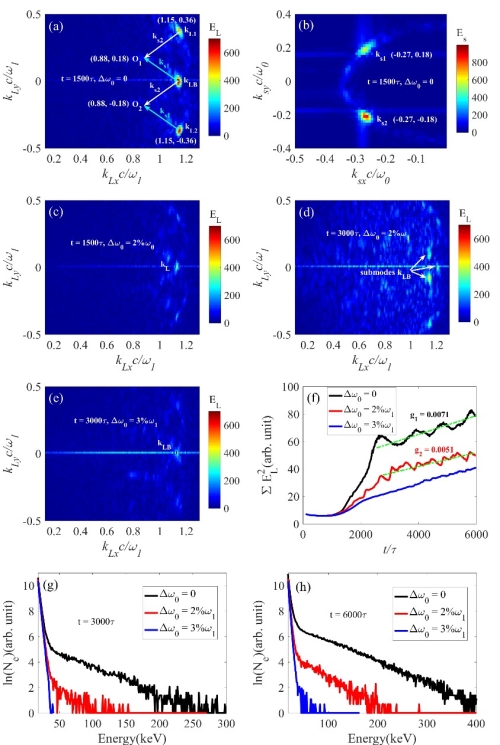Recently, a research team from Shanghai Institute of Optics and Fine Mechanics, Chinese Academy of Sciences, proposed a theoretical model of multibeam SRS coupling by a common electron plasma wave in homogeneous and inhomogeneous plasmas. The result was published in Plasma Phys. Control. Fusion on Mar 25, 2021.
According to this model, researchers discussed the mitigation of SRS by polychromatic lights based on the multibeam dispersion relation.
In this study, researchers found that one of the pump beams is coupled by the scattering light developed by another beam to excite the Langmuir wave. The excitation of the concomitant modes can be suppressed when the frequency difference ~ 1%. Common Langmuir waves are detuned from each other when different frequency differences are introduced between two beams.
For further mitigation, researchers introduced the polychromatic light, which is composed of many beamlets with different frequencies. Based upon the inhomogeneous plasma model, the polychromatic light reduced the saturation level of multibeam SRS, since the weakly coupled common modes are heavily damped in hot plasmas. Moreover, broad bandwidth can mitigate the absolute SRS side scattering in inhomogeneous plasmas by detuning the wave vectors of the daughter waves.
At present, low-coherence high-power laser drivers have achieved a series of developments. However, different from the classical technical proposal, multiple beams with different central frequencies can out-way the difficulty in producing bandwidth on one beam. And also, polychromatic light under ICF conditions can be generated, for example, by the modulation of high-power intense laser in tenuous plasmas.
This work was supported by the National Natural Science Foundation of China, the Natural Science Foundation of Shanghai, and the Strategic Priority Research Program of Chinese Academy of Sciences.

Figure 1. Collective SRS modes developed by polychromatic light with different bandwidths. (Image by SIOM)
Article website:
https://doi.org/10.1088/1361-6587/abe75a
Contact:
WU Xiufeng
General Administrative Office
Shanghai Institute of Optics and Fine Mechanics, CAS
Email: xfwu@siom.ac.cn
Web: http://english.siom.cas.cn/